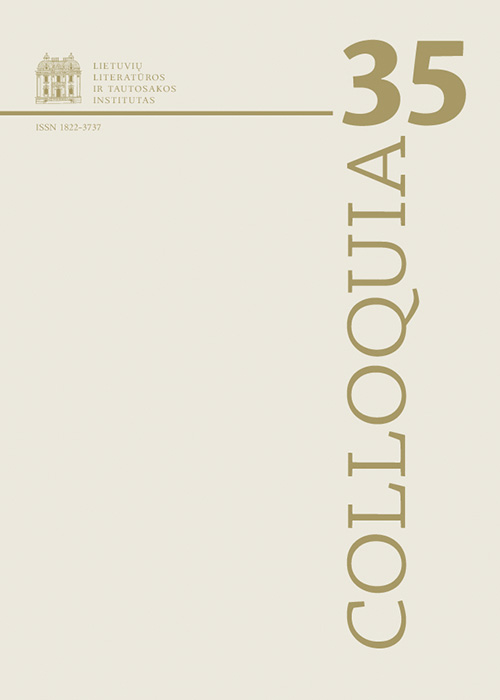Asmeninio mito tapsmas Dalios Staponkutės esė
Santrauka
Straipsnyje analizuojamos Dalios Staponkutės knygos Iš dviejų renkuosi trečią. Mano mažoji odisėja (2014), Lietumi prieš saulę (2007). Peržvelgiant esė tematinį lauką, pasitelkiant įdėmaus skaitymo ir giminingų kontekstų lyginimą, šiuose esė ieškota asmeninio mito formančių, susijusių su kalbos-vietos-papročių-istorijos-kūno-aistros teminėmis linijomis. Globalizacijos skatinamas keliavimas ir ambivalentiškas sąvokų tėvynė-užsienis santykis visokeriopai išplėtė keliautojo pažinimo ir savirealizacijos galimybes. Tačiau nors ir įvaldoma kalba ir „vieta“, neįmanoma pasiekti visiško susitapatinimo su naujaisiais namais. Pasiremdama asmenine patirtimi, esė autorė ieško galimų atspirčių globalizacijos diktuojamai niveliacijai ir dominuojančiam estetiniam-vartotojiškam santykiui su vieta. Ji stengiasi atkurti romantišką Tėvynės sampratą. Keliavimo kryptį į Tėvynę Staponkutė suvokia kaip įsipareigojimą asmeninei laisvei ir kūrybingumui. Keičiamos kultūrinės-geografinės aplinkos fone ji bando apčiuopti savikūros atsparas, asmens unikalumo ir gyvybingumo dėmenis. Staponkutės esė objektai ir jų stilistinė pagava yra artima Alfonso Lingio fenomenologinėms įžvalgoms, esama paralelių su Zygmunto Baumano mintimis apie globalizacijos pasekmes žmogui.
Atsisiuntimai
Skaitomiausi šio autoriaus(ų) straipsniai
- Imelda Vedrickaitė, Karo patirtis: atminties ir ateities formavimas (Algirdas Landsbergis ir Kurtas Vonnegutas) , Colloquia: T 33 (2014)
- Imelda Vedrickaitė, Algirdo Jeronimo Landsbergio archyvas Kaune , Colloquia: T 34 (2015)
- Imelda Vedrickaitė, Moralinis žmogaus tapsmas ir siurrealistinė vaizduotė. Saulius Tomas Kondrotas ir Šarūnas Sauka , Colloquia: T 39 (2017)
